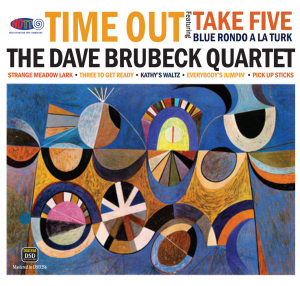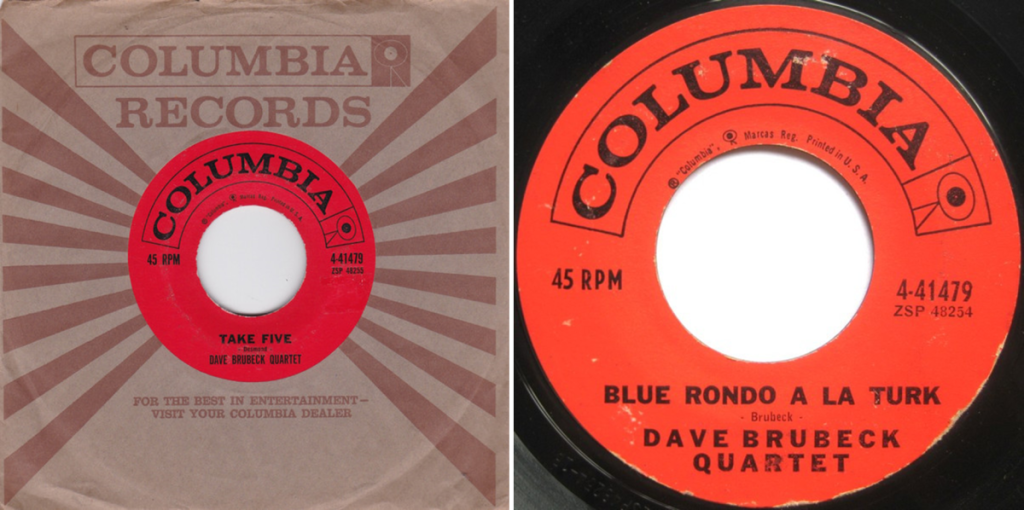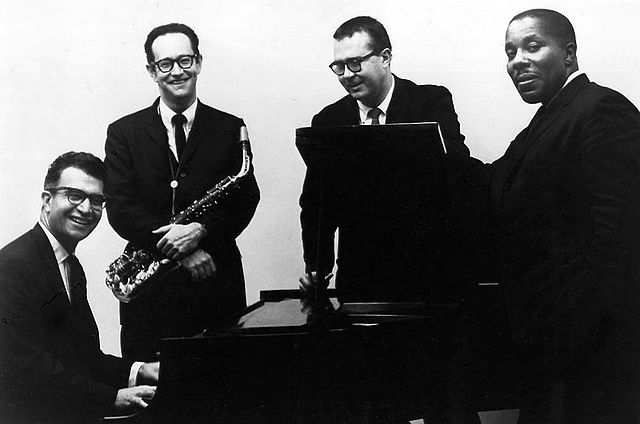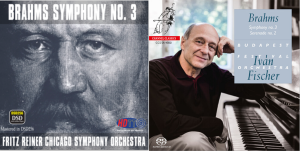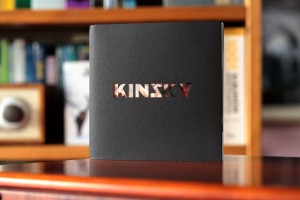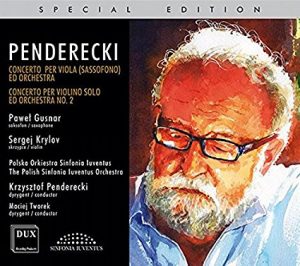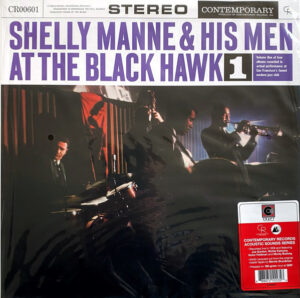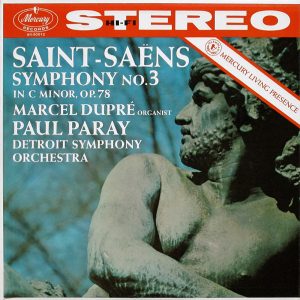Time Out was the first jazz album to sell more than a million copies. The album was certified platinum in 1997 and double platinum in 2011. The single, "Take Five", also sold over a million. And it has been reissued endlessly. So why bother with yet another? Because this release in Pure DSD256 from HDTT will be the best sounding digital reissue of Time Out that you have yet heard. And, it will be a MUST HAVE for any music lover who values high resolution, supremely natural-sounding recordings.
The Dave Brubeck Quartet, Time Out. HDTT 1959 2022 (Pure DSD256) HERE
For those of you who, like me, have acquired multiple reissues of this album, you're likely asking "why should I consider yet another?" Like many, my search has always been in hopes of finding that issue that sounds yet better, yet more resolving, transparent, and acoustically natural.
In my vinyl days, the best-sounding copy of this album on my shelves was the 45rpm single-sided reissue from Classic Records. It was the closest I could imagine to that elusive reel-to-reel tape dubbed within a couple generations of the master tape. Played on my Walker Audio Proscenium turntable, this release punched all my buttons—with greater resolution and transparency than any of the early pressings. And still with very natural sounding instrumental timbre, no hype. If you have this same recording and don't share my opinion of it, well, take that into account as you assess my suggestions here. After all, I'm just offering context, not comparing vinyl to digital.
Shifting now to my current all-digital playback world, I've been at a loss to find a digital reissue I've particularly liked. I gave up searching after trying a variety of different digital files, from standard CD, to high resolution PCM, to SACD. None really satisfied, and I was done looking.
And then Bob Witrak releases this marvel of a transfer in Pure DSD256. And I'm hooked. I've found the digital release that meets all my hopes for a supremely satisfying issue of this great album.
As with a number of HDTT's recent jazz reissues, I'm hearing on this release what I'm coming to expect from these 15ips tape transfers to DSD256: more air around the instruments, greater texture and timbral density, greater resolution, more delicate highs, increased overall transparency, and more relaxed sound overall—like good analog. If you've listened to HDTT's recent Pure DSD256 releases of Kind of Blue, or Getz/Gilberto, or Cootie Williams In Stereo, or Lady in Satin, you've heard the kind of extraordinarily transparent sound to which I'm referring.
So, bottom line: if you like the music on Time Out and if you value superb transparency and instrumental resolution, this is the best digital reissue I've heard and I highly recommend it.
Edit December 17, 2022: I've heard from several other listeners now. Some agree with my assessment, others do not. We all have different listening priorities and preferences. Those who disagree with my assessment generally complain that the HDTT sounds dark, some say murky, without as much presence from the cymbals, without as much impact of stick on drum skin, without as much evident string slap on finger board on the double bass, as they are used to hearing. For their tastes, the SACDs are preferable, with more life, more energy.
And, yes, I hear the same difference, but I assess all of it very differently.
To me, the SACDs and the 24-176.4 all sound manipulated to boost the presence region and the highs. They do have more zip. The cymbals are more forward in the mix on "Blue Rondo a la Turk" than in the HDTT DSD256. But to my ears and for my listening priorities, the instruments in those other reissues don't sound natural. The sound bright, and hard, and flat. They don't have anywhere near that wonderfully relaxed natural sound, that sound of real instruments being played in a real space, that the HDTT DSD256 captures from the tape and presents to us. So, be forewarned. With this album we are not all going to agree.
But, listening yet again this morning, I doubt that I'll ever listen again to the SACDs or the 24-176.4 now that I have this delightfully real-sounding DSD256 transfer from HDTT and its very special analog sound. It will be my "go to" digital version of this album. As one experienced listener commented about the DSD256 release: "I liked the SACD(s), but this sounds much more real."
So, for those of you who perhaps do not know this album, what about the music here? Why did it become such an important and broadly released album?
Thus far, I've assumed you you know the album and know the music. And all I've been doing is sharing with you why this release is worthy of replacing (entirely) your assortment of other digital releases. For those who are not so familiar with this album, perhaps some explanation of why it has had such an impact is in order. So, here we go...
First, the album combines superb performances by pianist Brubeck, alto saxophonist Paul Desmond, drummer Joe Morrello and bassist Gene Wright. Recorded in 1959, this was the year Miles Davis and Gil Evans introduced the jazz audience to modal music with the landmark album Kind of Blue, John Coltrane released Giant Steps and Art Farmer and Benny Golson formed their first Jazztet.
A lot of new things were happening in jazz in those days, but rhythmically, the music was still being played mostly in four-four time.
With the release of Time Out, Brubeck turned this on its head. Brubeck had always been interested in polyrhythm and polytonality. The first theory is what drives African music; the second is tied closely to classical. So instead of reworkings of jazz standards or tunes of the day, you got "Blue Rondo a la Turk," a song in nine-eight time, as well as "Pick Up Sticks," "Strange Meadow Lark" and "Take Five."
"Take Five" is the cut that truly launched this album into the high reaches of jazz appreciation. Composed by Paul Desmond, but with heavy input/collaboration from Brubeck, it was a stunner. As described in an NPR article from Weekend Edition (HERE), two years after recording the album and a year after Columbia finally released it, Dave Brubeck told Ralph Gleason on the TV program Jazz Casual that jazz had lost some of its adventurous qualities. He said it wasn't challenging the public rhythmically the way it had in its early days.
"It's time that the jazz musicians take up their original role of leading the public into a more adventurous rhythm. It's a good idea to shake things up a bit." And that's exactly what he did with the song "Take Five."
"Take Five" added one little beat to the normal 4/4 pulse and made it 5/4, an unheard-of time signature for jazz. It’s found in avant-garde music or in folk traditions tucked away in Hungary, India... or in Turkey, where Dave discovered it. On tour, he heard local musicians playing odd rhythms and decided right there that he’d make a jazz album employing unusual time signatures. "Blue Rondo à la Turk" in a crazily sliced 9/8 was born there, and so was Brubeck’s lasting popularity. (See WRTI article HERE.)
The quartet recorded the tune in two takes, and when it was done, Paul Desmond thought the song was a throwaway. The title "Take Five" was Brubeck's idea; Desmond wasn't crazy about the title, but Brubeck persisted.
In 1959, "Take Five" became the A side of a 45 record, Brubeck says, only because the other popular song "Blue Rondo a la Turk" was too long of a title for disc jockeys to say on the air. The album Time Out sold out almost immediately.
Time Out was a gauntlet slammed into the ground of jazz. It’s as if Dave Brubeck were announcing, "Ladies and gentlemen, there is only one rule in jazz. It’s got to swing. And we can swing in 4, 3, 5, 7, 9, or anything. Here we go." And off they went. "Take Five" was not only the Quartet’s biggest hit, it is still the biggest jazz single in history.
The 45rpm record, A&B side, released in 1959. I've never heard the single, but I've read it was from an alternate take and sounds a little different than the take chosen for release on the full Time Out album.
The quartet in 1962. From left to right: Dave Brubeck, Paul Desmond, Joe Morello and Gene Wright. (Public domain)




